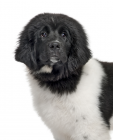Newfoundland
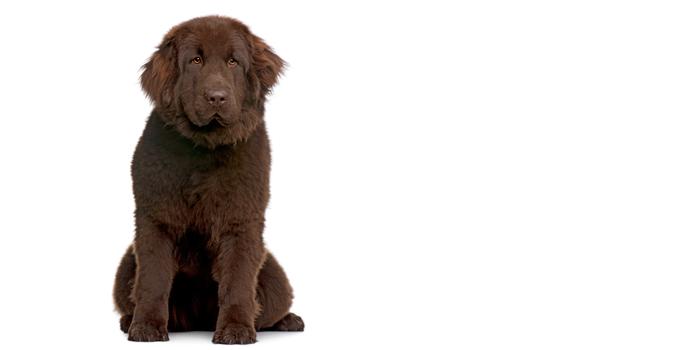
In my own words
On first impressions I come across as this huge, furry teddy bear, an imposing size with almighty strength, almost bear like. But if a bear is what you think I am you couldn’t be more wrong. I hold no inch of bad taste in my body, in fact I’m probably the friendliest kind you’ll ever meet, I love making new friends and I’m loyal to ones I have. I am a true gentle giant, patient and loving with any children, in fact the safety of any child or human in fact is top of my list. So much so I’m an amazing lifeguard, known to have saved many lives from drowning in waters. I will go to any length to keep you from harms way. My favourite hobby helps by job role a lot, swimming great lengths is my most treasured past time, I’ll pass at a brisk jog but jump at the chance for a long swim. I pride myself on my work ethic, and thanks to my durability to handle such extreme weathers any dirty job I will succeed in, such as helping out the fishermen in Canada.
My ideal owner(s)
Families
Active Types
Outdoor Types
Farmers
Fisherman
Very Loving
What they say about me
Gentle
Laid back
Patient
Loving
Sweet
Elegant
Courageous
Generous
Heroic
Is this Newfoundland for you?
Test your knowledge about the Newfoundland
Information essential about the Newfoundland
Breed Group - Working
SIZE
Weight: Male: 130-150; Female: 100-120 lbs.
Height: Male: 28; Female: 26 inches
Popularity:
Many tales have been told of the courage displayed by Newfoundland's in lifesaving exploits and this has attracted the attention of a large number of artists, who have portrayed the dogs in paint, stone, bronze and porcelain over the last two centuries. The one most commonly recognized was Nana employed as a nanny by the Darling family in the children’s story ‘Peter Pan’. The breed prospered in the United Kingdom, until 1914 and again in 1939, when its numbers were almost fatally depleted by wartime restrictions. Since the 1950's there has been a steady increase in numbers and popularity, while still remaining a relatively uncommon breed, this is not least because a Newfoundland's great size and fondness for playing around in mud and water make it very unsuitable for most homes.
Breed History:
The Newfoundland developed on the island from which it takes its name in Canada. It is almost certainly a combination of the ancient, native Indian dogs and the many European breeds, which were carried across the Atlantic by explorers and fishermen from the 15th century onwards. By the end of the 17th century this "cocktail" had stabilized into a large, web-footed, thick coated dog, capable of draught and water work. In Newfoundland he was used as a working dog to pull nets for the fishermen and to haul wood from the forest. He also did heavy labor, such as powering the blacksmith's bellows. Now days the modern newfie no longer works, although in Europe they can still be seen jumping out of helicopters and assisting the lifeguards, in the UK there is a working lifeguard newfie in Cornwall. Imported in considerable numbers throughout Europe, these dogs soon attracted the attention of rich people, who brought them to ornament their estates and entertain (and watch over) their children.
Character:
Loyal and intelligent, the Newfoundland is a wonderful working partner and dependable, sweet-natured family pet.
Newfoundland’s are large draught and water dog, with a natural life saving instinct and a devoted companion due to their exceptionally gentle and docile nature. Its useful qualities were soon recognized well beyond the North American continent, as was its equable temperament, which meant it worked well with other dogs and was easily trained. He's like a big, loveable Teddy Bear. He loves children, is intelligent, and aims to please. He's happiest when he is with his family, and should not be left alone for long periods of time or be banished to the backyard or a kennel.
Temperament:
The Newfoundland is a sweet-dispositional dog that acts neither dull nor ill tempered. Sweetness of temperament is the hallmark of the Newfoundland; this is the most important single characteristic of the breed. He is a devoted companion. A multipurpose dog, at home on land and in water, the Newfoundland is capable of draft work and possesses natural lifesaving abilities. The Newfoundland is a giant breed, but with a passion for its human companions, mostly laid back but can have a streak of mischief when the mood takes them, they are generally very good with other animals to the point of lying flat so a smaller dog can come close without being too intimidated by the sheer mass of the shaggy dog they have seen. Do not be complacent as these dogs are powerful (and can be known to suffer from Newfoundland deaf ear, in other words I hear you but I will ignore you and do my own thing) Amazing with children they are actually nicknamed ‘the babysitter’ for their protective, gentle nature. The Newfoundland’s expression is soft and reflects the character of the breed--benevolent, intelligent, dignified but capable of fun. He is known for his sterling gentleness and serenity.
Conformation:
The Newfoundland is a large, heavily coated, well balanced dog that is deep-bodied, heavily boned, muscular, and strong. A good specimen of the breed has dignity and proud head carriage.
A true workhorse, the Newfoundland is a master at long-distance swimming and has true lifesaving instincts in the water. He is large and strong, possessing a heavy coat to protect him from icy waters. Equally at home in the water and on land, today's Newfoundland competes in conformation, obedience, agility, tracking, draft and water tests, and carting. He also makes an amazing life saves with search and rescue work force. All dogs have the potential for heroism, but it seems to be a hardwired into this naturally strong swimmer. There are many accounts of Newfoundland’s rescuing people from the cold waters of the Atlantic following a shipwreck or plucking children from icy deep water — just in time.
Regardless of the purpose of the Newfoundland in your life, be it worker or companion, he will no doubt capture your heart.
Colour:
Black, brown, gray, or white and black.
Training:
When it comes to training, you'll find the Newfoundland is an A student. He learns quickly and there is little this dog can't do. Training should begin early because the breed gets big quickly and it can be tough to haul a 100-pound pooch off the couch. Like every dog, the Newfoundland needs early socialization — exposure to many different people, sights, sounds, and experiences when young. Socialization helps ensure that your Newfoundland puppy grows up to be a well-rounded dog. He can sometimes have selective hearing as an older dog so to avoid that all training must be consistent and fulfilled as a pup.
Care:
The Newfoundland has a flat, water-resistant double coat. The outer coat is coarse and long, and the undercoat is soft and dense. Shedding is moderate, and the bulk of it occurs primarily in the spring and autumn.
Grooming is not for the faint hearted, grooming 2 to 3 times a week should keep a newfie clean and matt free, they can matt very easily especially the feathers, under arms and behind the ears, but most enjoy the fuss and will readily lie down with legs a kimbo to be brushed.
The Newfoundland is a big dog when full grown. Though mellow, he's not your basic one-bedroom apartment dog and would probably be happier in a more spacious setting. He has a strong work ethic, needs exercise, and mental stimulation. Ongoing training and dog sports are a perfect outlet for his working abilities. You'll need to take special care if you're raising a Newfoundland puppy. Like other giant breeds, the Newfoundland grows very rapidly between the age of four and seven months, making him susceptible to bone disorders. As a big dog, he ages more quickly than small dogs too.
Health:
The Newfie is prone to a host of health problems. Here’s a brief rundown on a few of the things you should know. As might be predicted, given their large size, Newfies can suffer from a number of joint and structural problems. It's important that young, growing dogs be kept lean and not allowed to exercise too strenuously or eat too much, as this will lead to injuries and problems. One such structural problem is the genetic hip deformity known as hip dysplasia. Newfoundland’s are at risk for heart disease, including dilated cardiomyopathy and subaortic stenosis. Cystinuria is a genetic kidney defect that leads to the formation of bladder stones that are very difficult to manage with diet or medication and often requires surgery both to remove the stones from the bladder and to repair urinary blockages. Keeping a Newfie at an appropriate weight is one of the easiest ways to extend his life. Make the most of your preventive abilities to help ensure a healthier dog for
You may also like:
Newfoundlands and their owners »

If you like Newfoundlands, you may be interested in breeds of the same size »

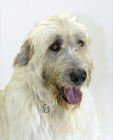
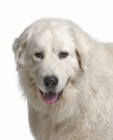

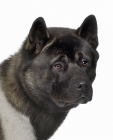
If you like Newfoundlands, you may like other breeds with similar characteristics »
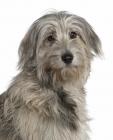
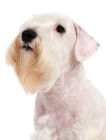
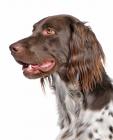
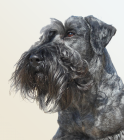
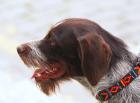
If you like Newfoundlands, you may be interested in these other working dogs »




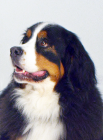
Advice on choosing your breed »
Find an animal shelter or rescue home where a Newfoundland is waiting for a new home »
The Newfoundland's sweet disposition makes him a good fit for families. Although he appears somewhat docile, he is an active dog and will need daily exercise. Regular brushing is important to maintain his plush coat. Newfoundland’s are also an intelligent breed and are readily trained, they are known for their sweet and easy going temperament. Generally speaking, a Newfoundland blends into new situations easily and warms to strangers quickly. This is not to say you will never meet an aggressive Newfoundland - just as with any breed of dog, there are exceptions. But Newfoundland’s are truly known to most as being a gentle giant. Owners usually receive a lot of attention, especially when taking their Newfie out for a stroll around the block. People are very interested in such a large dog and often have many questions to ask.
When you combine a Newfie's calm disposition with their amazing strength, you get a dog that will safely pull young children around in a cart, much like a horse. Newfoundland’s love to play and cuddle with people of all ages, and will grow quite attached to their family. A few cons most obviously are their size can be a deterrent. A 150-pound dog that thinks he's a "lap dog" or still behaves as a puppy can be difficult for smaller humans to manage. Newfs take up a significant amount of space, which is definitely something potential owners need to consider.
Families that pride themselves on having an immaculate house are probably not the right owners for the Newfoundland dog. As with many other giant breeds, Newfoundland’s drool almost constantly.
Newfoundland’s do well in cold climates, and are not so fond of the hot summer. If you live in a hot climate, you will need to make adjustments for this large animal. It might mean keeping him indoors in air conditioning constantly, or clipping his coat ultra short. Large breeds are very sensitive to hotter weather and their owner must be very careful to not let them overheat. It is very important that a Newfoundland goes through obedience training as soon as he is able. It is imperative that their owner learns to control him as a puppy, because as he grows, an untrained Newfoundland becomes more difficult to handle.
Add your own ratings on this breed »
|
*PLEASE NOTE: All our breed profiles are general, and all dogs are individuals. Always talk to the breeders and meet the owners you are buying from. Try to meet the dog and its parents if it is a puppy in their home environment.








